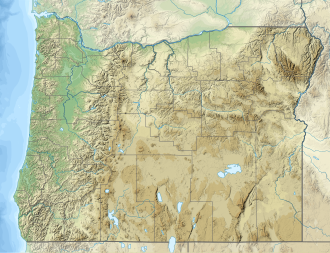| North Fork Umatilla River | |
|---|---|
 North Fork Umatilla River | |
| Etymology | Native American (Indian) name for the river [1] |
| Location | |
| Country | United States |
| State | Oregon |
| County | Union, Umatilla |
| Physical characteristics | |
| Source | Blue Mountains |
| • location | Umatilla National Forest, Union County |
| • coordinates | 45°42′17″N118°02′05″W / 45.70472°N 118.03472°W [2] |
| • elevation | 5,102 ft (1,555 m) [3] |
| Mouth | Umatilla River |
• location | near Graves Butte, Umatilla County |
• coordinates | 45°43′32″N118°11′19″W / 45.72556°N 118.18861°W [2] |
• elevation | 2,326 ft (709 m) [2] |
The North Fork Umatilla River is a tributary of the Umatilla River in Union and Umatilla counties in the U.S. state of Oregon. [2] Its headwaters lie in the Umatilla National Forest in the Blue Mountains of northeastern Oregon. It flows generally northwest to meet the South Fork Umatilla River near Graves Butte. Together the two forks form the main stem Umatilla. [4]
Contents
Near its headwaters, the North Fork flows north along Oregon Route 204 north of Elgin before flowing west through the North Fork Umatilla Wilderness. The river's named tributaries from source to mouth are Johnson Creek, which enters from the left, then Woodward and Coyote creeks, which enter from the right. The South Fork enters from the left at the confluence of the forks. [4]
